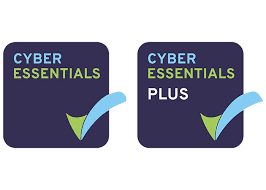Understanding Malware: A Comprehensive Guide to Protecting Your Digital World
In today’s digital age, the threat of malware looms large. But what exactly is malware? How does it work, and how can you safeguard yourself and your devices against it? In this comprehensive guide, we will delve deep into the world of malware, exploring its various forms, the risks it poses, and effective strategies to stay protected. Whether you’re a tech-savvy enthusiast or a casual internet user, this article will equip you with the knowledge to defend your digital world from the ever-present menace of malware.
Section 1: What is Malware?
Malware, short for malicious software, is any software intentionally designed to cause damage to a computer, server, client, or computer network. In this section, we define malware and provide a clear understanding of its purpose and capabilities. We cover its origins, different types, and the ways in which it infiltrates systems. By explaining malware’s malicious intent and varied methods of attack, readers will gain a solid foundation in comprehending this digital threat.
Section 2: Common Types of Malware
Here, we explore the most prevalent types of malware, including:
- Viruses – Programmes that can replicate themselves and spread to other files or programmes through code injection.
- Worms – Similar to viruses, worms can replicate themselves and spread independently.
- Trojan horses – Disguised as legitimate software, trojans trick users into executing them by pretending to be harmless.
- Ransomware – This type encrypts data on the infected system and demands a ransom to restore access.
- Adware – Generates revenue by automatically displaying or downloading advertising material when a user is online.
- Spyware – Spies on user activity without permission to gather sensitive information.
Each type is explained in detail, shedding light on their specific characteristics, infection vectors, and potential risks to individuals and organisations. Real-world examples and case studies illustrate the impact of these malware variants.
Section 3: How Does Malware Spread?
Understanding how malware propagates is essential for effective protection. This section outlines the various channels through which malware spreads, including:
- Email attachments – Opening attachments that appear legitimate but contain malicious software.
- Infected software downloads – Downloading software from unreliable sources can lead to malware infections.
- Malicious websites – Visiting sites that contain malicious code can initiate automatic malware downloads.
- Social engineering tactics – Techniques that trick users into providing confidential information or downloading malware.
By highlighting these common infection vectors, readers will be better equipped to identify potential risks and take proactive measures to prevent malware attacks.
Section 4: Signs of Malware Infection
To detect and respond effectively to malware, recognising the signs of infection is crucial. Symptoms may include:
- Sluggish performance – Unusually slow computer speed.
- Unexpected pop-ups – Frequent and unexplained pop-up windows.
- Modified files – Changes in files without user action.
- Unauthorized network activity – Unusual outbound network traffic.
Understanding these red flags allows users to take immediate action to mitigate the damage caused by malware.
Section 5: Protecting Against Malware
In the final section, we delve into best practices and tools for safeguarding your digital environment from malware attacks. Essential steps include:
- Keeping software up to date – Ensuring all software is current to avoid vulnerabilities.
- Using robust antivirus and anti-malware solutions – Employing strong security software to detect and block threats.
- Practising safe browsing habits – Being cautious with downloads and email attachments.
- Implementing regular data backups – Backing up data regularly to prevent loss in case of malware infection.
Practical tips and recommendations will empower readers to fortify their defences and reduce the risk of falling victim to malware.
How Managed Service Providers Can Shield Your Business from Malware
Understanding what is malware and its potential threats is critical for any business. Managed Service Providers (MSPs) play a vital role in helping businesses stay one step ahead of these malicious threats. But how exactly do MSPs enhance your cybersecurity posture?
Firstly, MSPs provide proactive monitoring and management of your IT infrastructure, ensuring that any signs of malware are detected and addressed promptly. This is crucial because knowing what is malware and its behaviour allows MSPs to implement effective defence strategies tailored to your specific needs.
Moreover, MSPs keep your systems up to date with the latest security patches and software updates. As we’ve explored what is malware and how it exploits vulnerabilities, these updates close the gaps that malware might use to infiltrate your network.
MSPs also educate your staff about what is malware and how to avoid common traps that lead to malware infections, such as phishing emails and unsafe websites. Training is often overlooked in cybersecurity, yet it is one of the most effective defences against malware attacks.
In addition to monitoring, updating, and educating, MSPs can also manage your data backup solutions. As we’ve seen in our discussion on what is malware, particularly ransomware, having secure and regularly updated backups can mitigate the damage caused by malware attacks, allowing your business to resume operations quickly and efficiently.
In conclusion, understanding what is malware is only the first step in a comprehensive cybersecurity strategy. By partnering with a Managed Service Provider, businesses can ensure they are not only educated about the dangers of malware but are also well-equipped to prevent, detect, and respond to threats swiftly. This collaborative approach to cybersecurity makes MSPs an invaluable ally in the battle against malware.
The Impact of Suffering a Malware Attack
When deliberating on what is malware, it’s equally crucial to understand the profound impact a malware attack can have on your business. A malware attack can disrupt business operations, lead to financial losses, and damage your company’s reputation. Understanding what is malware helps in appreciating the breadth of these consequences.
Firstly, operational disruption is a direct result of many malware incidents. If you’re still wondering what is malware capable of, imagine your essential systems grinding to a halt—this can halt production, services, and sales, affecting nearly every aspect of your business operations.
Financially, the costs associated with malware attacks can be substantial. Beyond the immediate disruption, businesses often face substantial expenses in eradicating malware. This includes the cost of hiring specialists who understand exactly what is malware, how it works, and the best methods for its removal and recovery of data.
Moreover, when considering what is malware and its impacts, one must not overlook the potential legal repercussions. Data breaches often accompany malware attacks, leading to possible legal challenges if sensitive information is compromised. This is particularly significant for businesses that handle personal data, where understanding what is malware and its implications is linked to compliance with data protection regulations.
Reputation damage is another critical effect of malware attacks. The question of what is malware doing to your customer’s trust is vital. News of the attack can erode customer and stakeholder trust, making them question the security of their interactions with your business.
To encapsulate, knowing what is malware extends beyond definitions to a full understanding of its potential to inflict extensive harm on your business landscape. This reinforces the necessity of robust cybersecurity measures and constant vigilance in the digital age.




